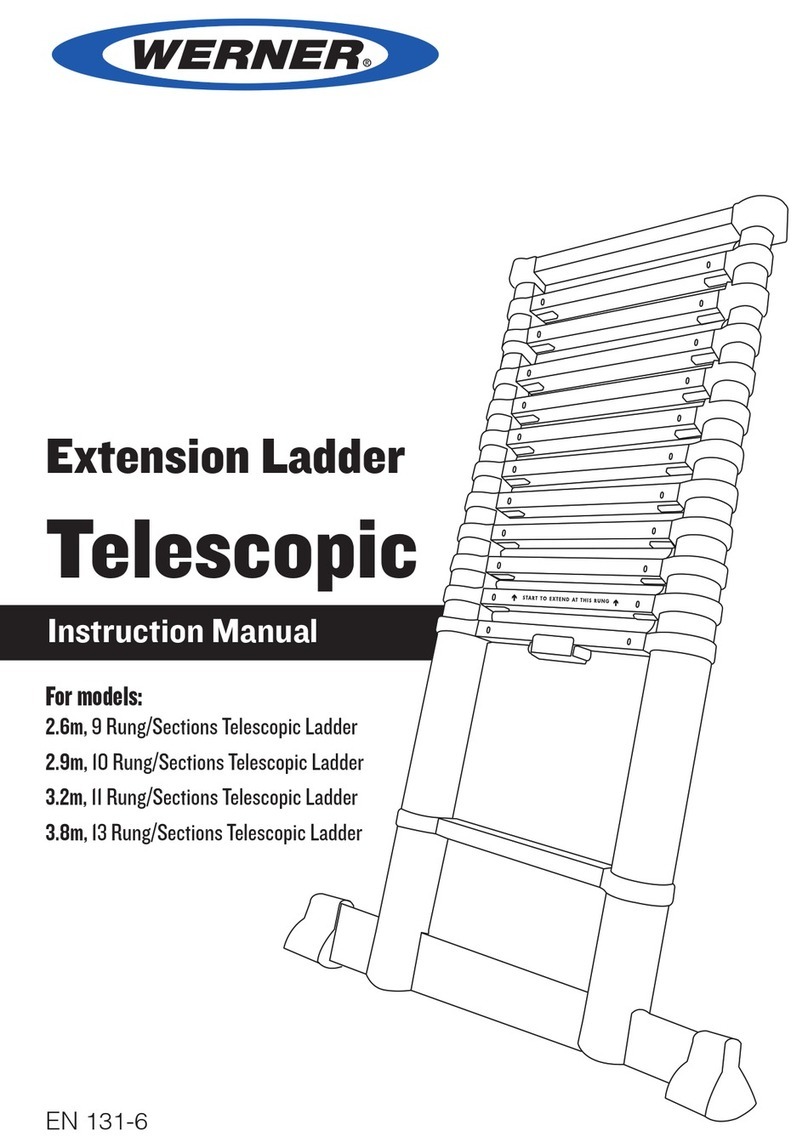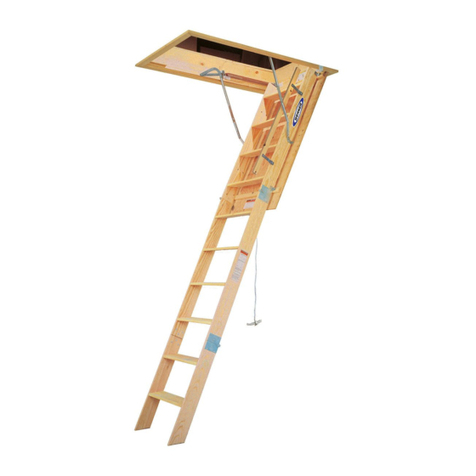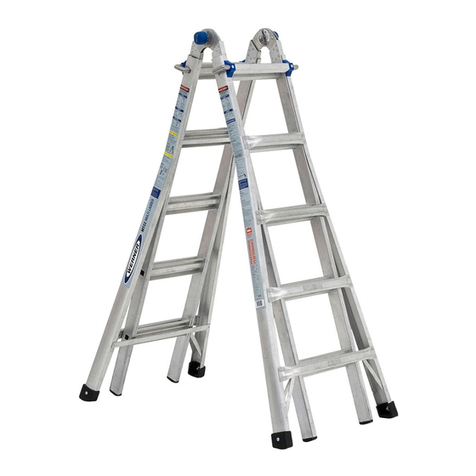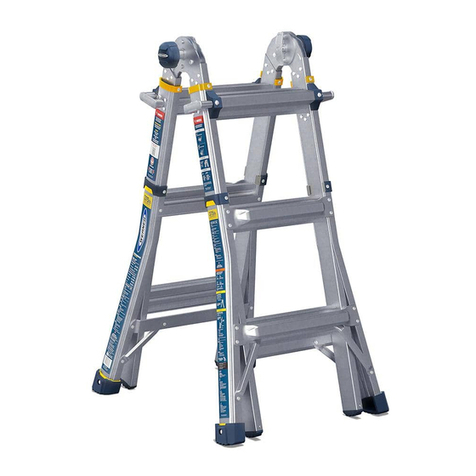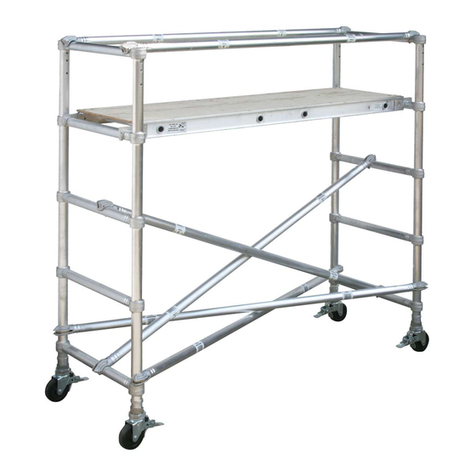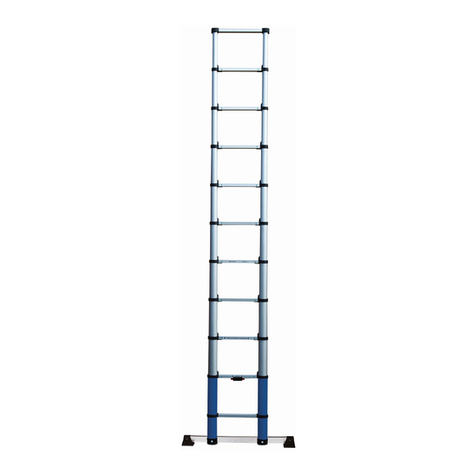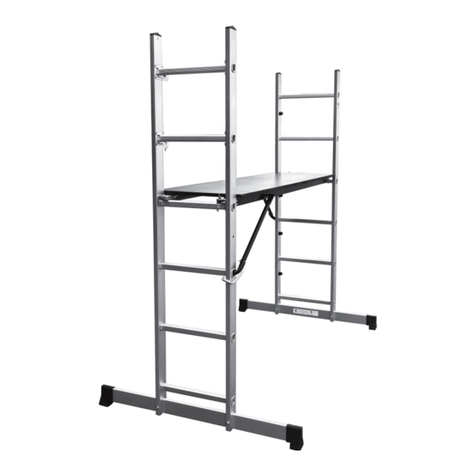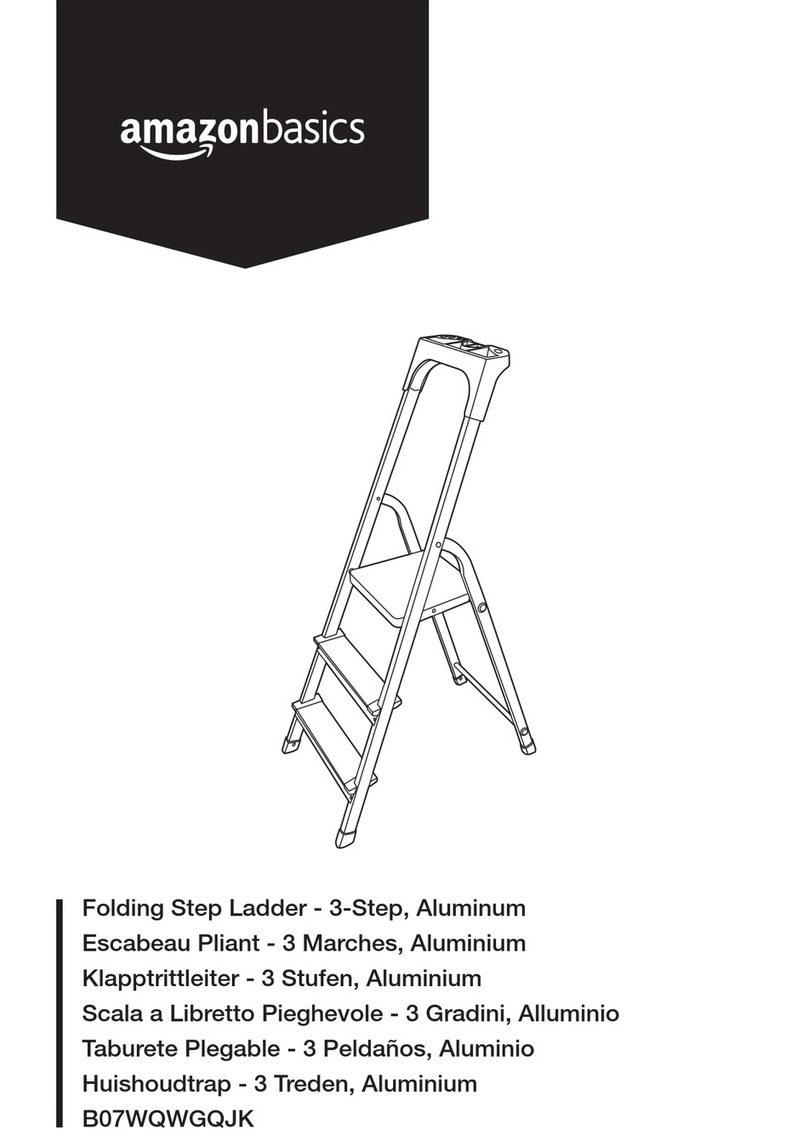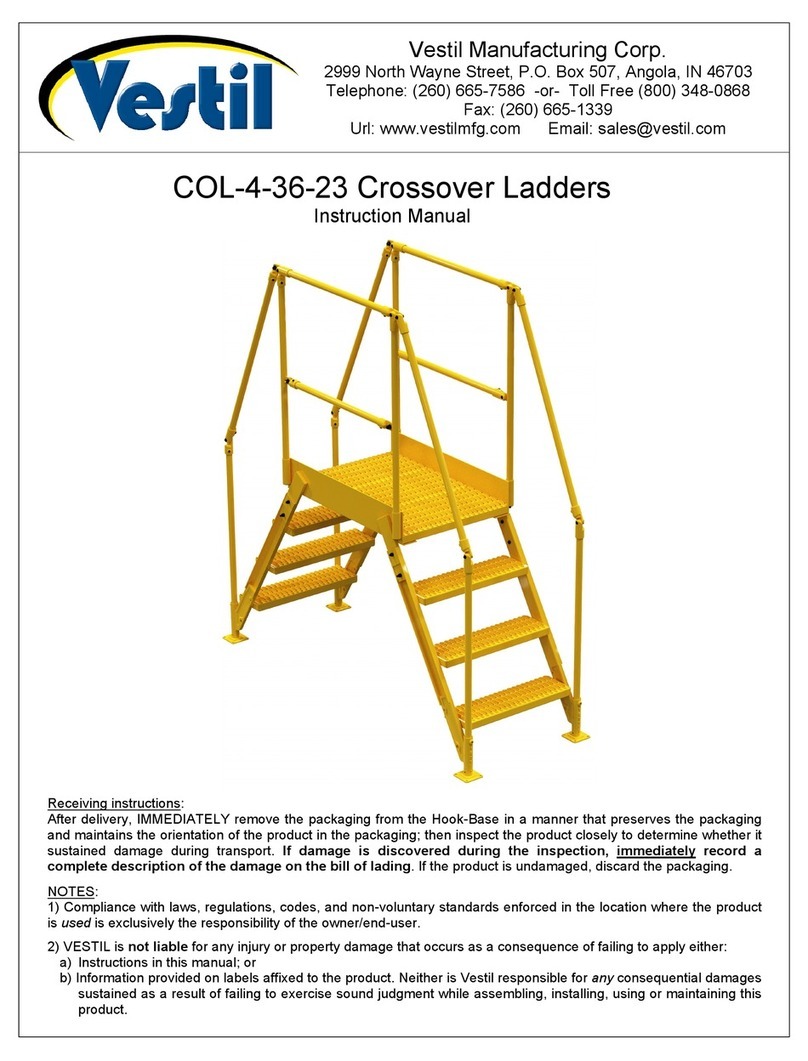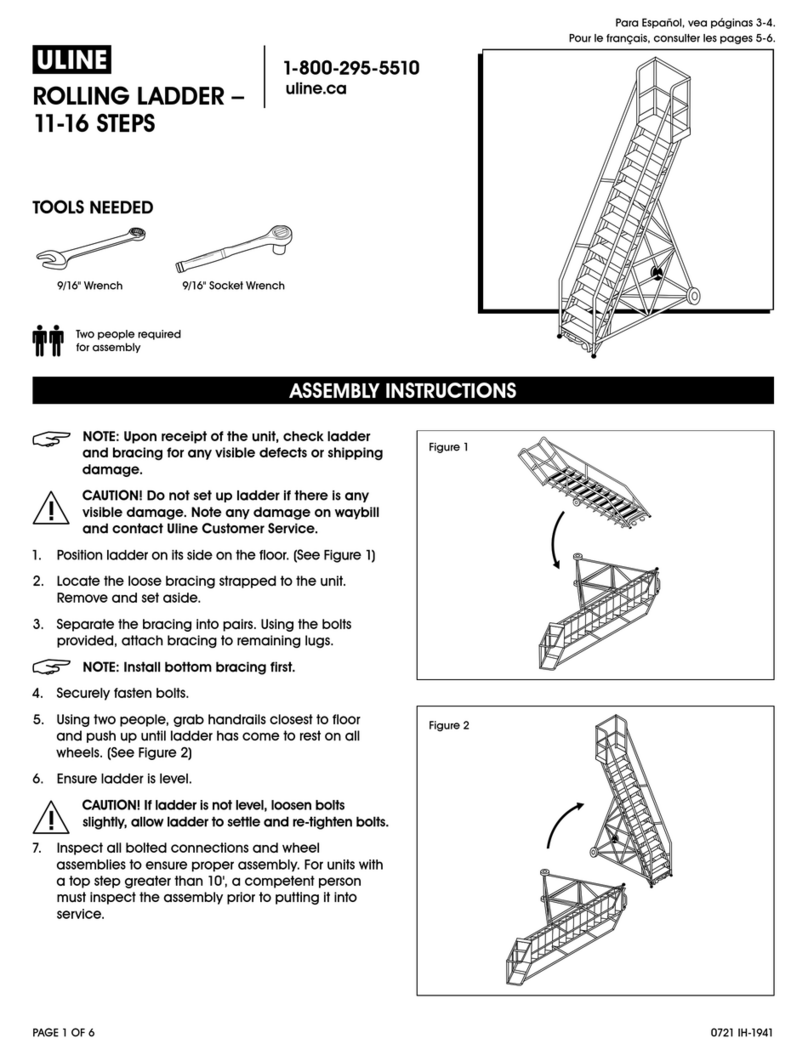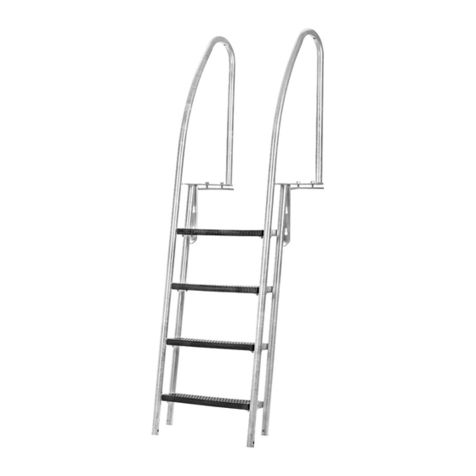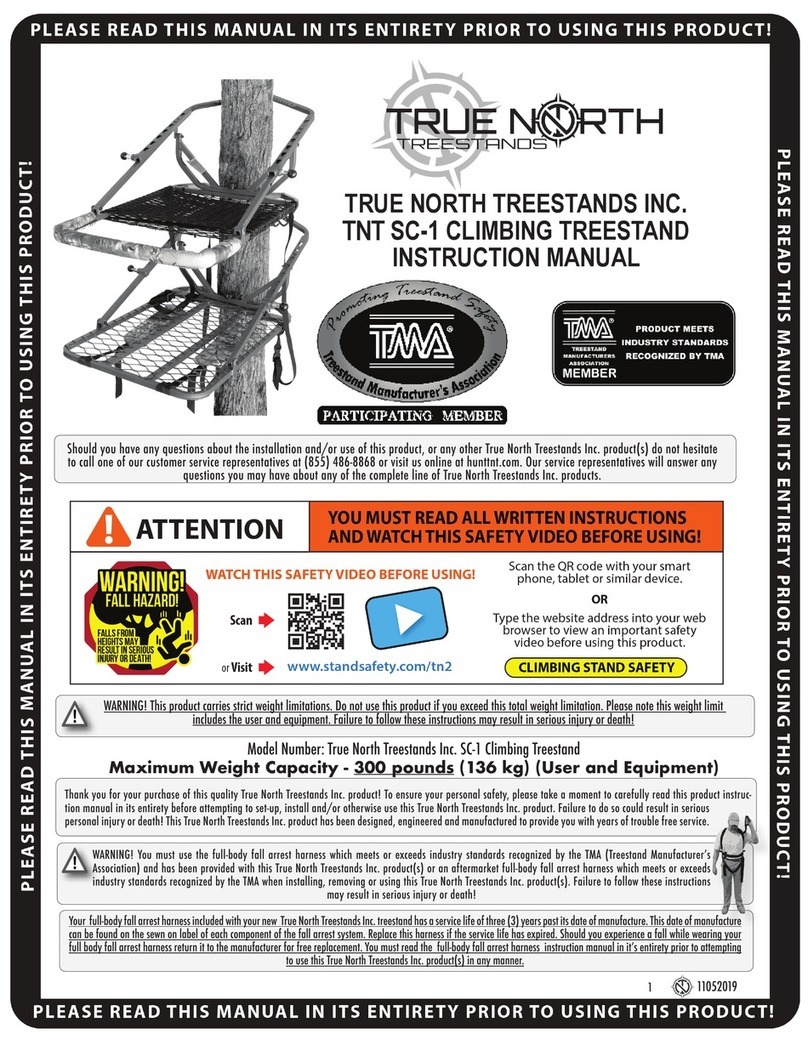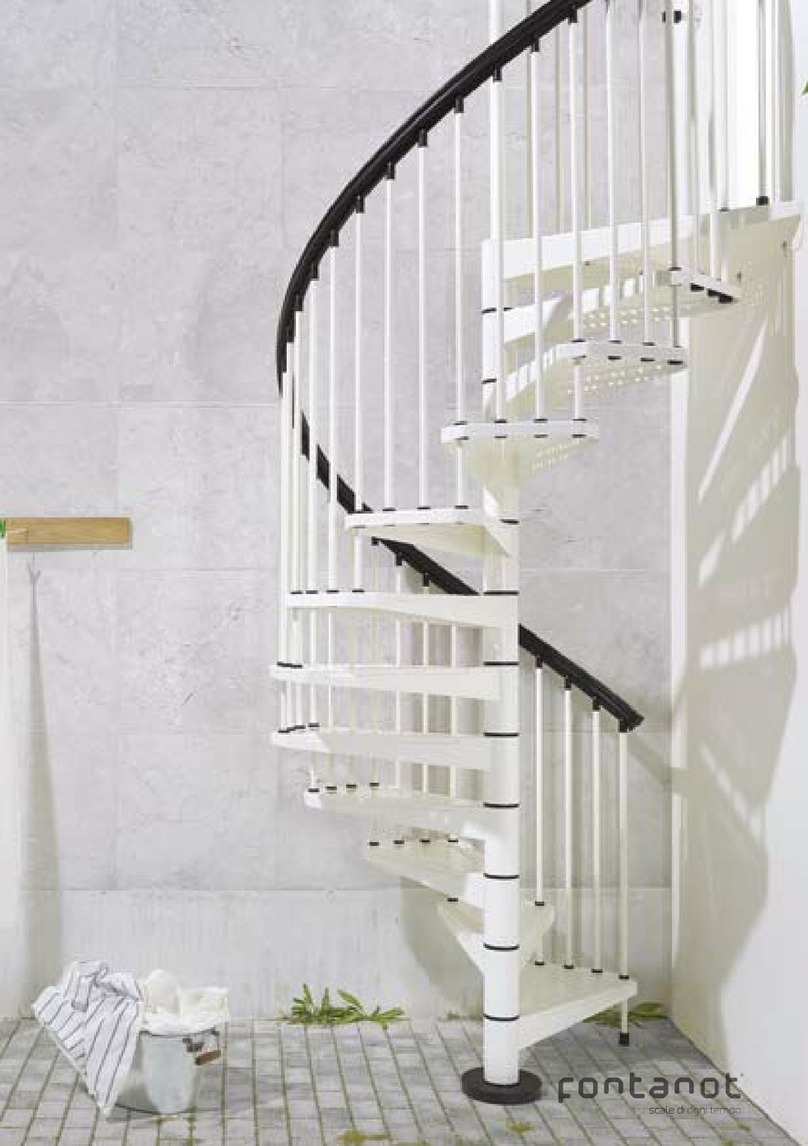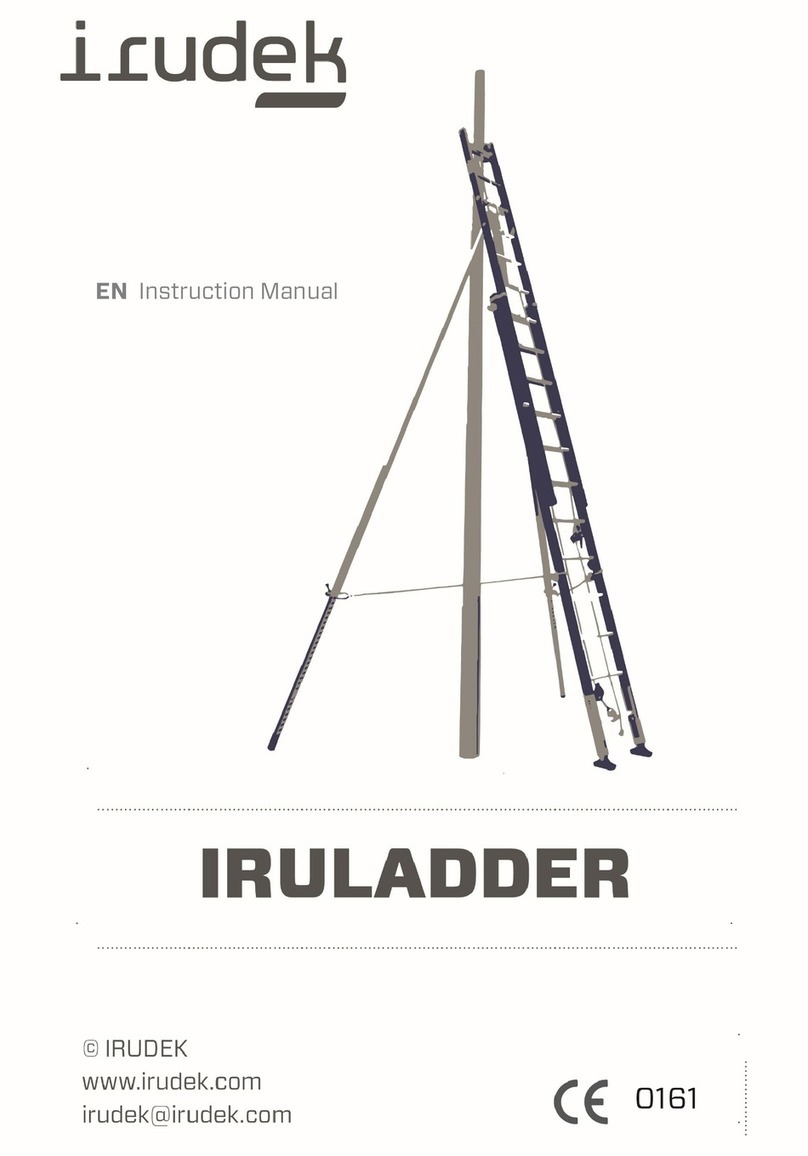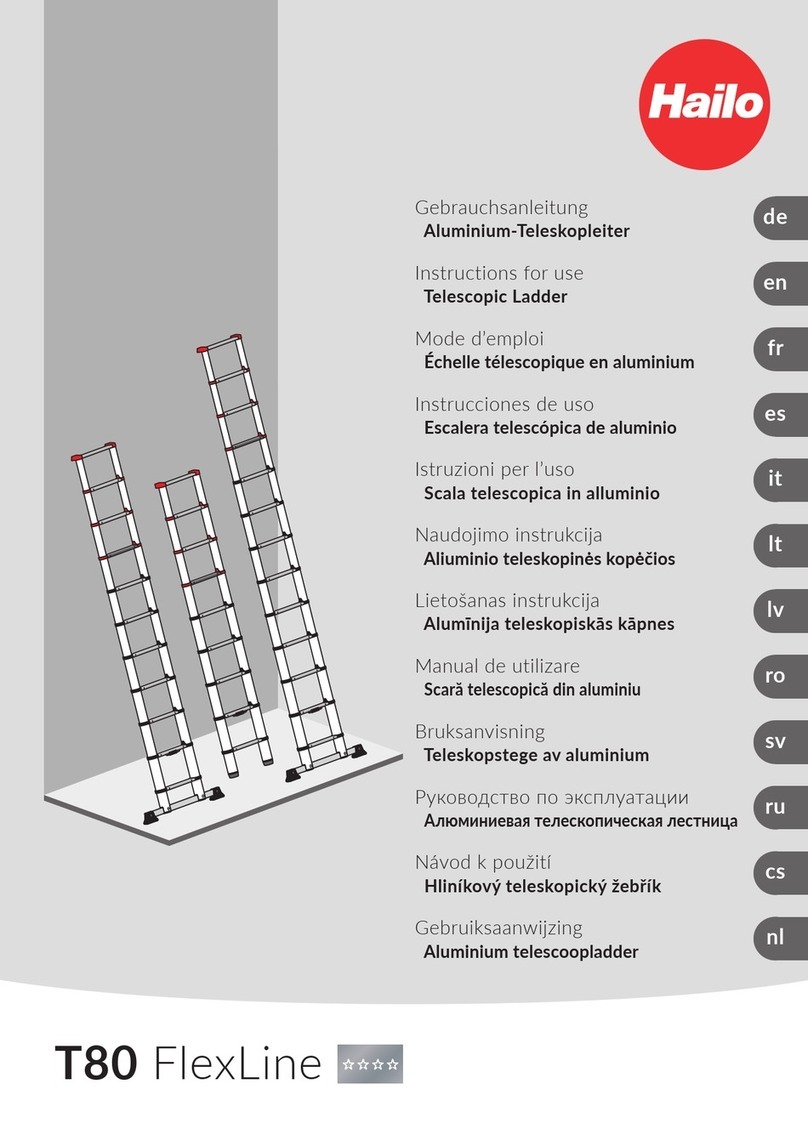Werner Telescopic Soft Close Extension Ladder User manual

INSTRUCTION MANUAL
Telescopic Soft Close
Extension Ladder
2.6m, 9 rung/section Telescopic Soft Close Extension Ladder
2.9m, 10 rung/section Telescopic Soft Close Extension Ladder
EN 131-6
For models:
1Wall Bumper
2Rung
3Lock Indicator
4Support Ring
5Lock Release
6Bottom Rung
7Foot
1
2
5
3
4
6
7

Leaning Ladder Guide......................................................... 2
Setup & Use ......................................................................... 4
Ladder Safety Check ........................................................... 6
CONTENTS

2
Every month, more than a thousand people need
hospital treatment because of accidents at home
involving ladders...
...ABOVE ALL BE CAREFUL
Leaning Ladder Guide
BEFORE USE
WARNING! Fall from the ladder
•Read all instructions on and
accompanying the ladder.
•Inspect the ladder after delivery.
Before every use visually check the
ladder is not damaged and is safe
to use.
•Do not use a damaged ladder.
•Do not use the ladder if you are
not fit enough. Certain medical
conditions or medication, alcohol or
drug abuse could make ladder use
unsafe.
•Ensure the ladder is suitable for the task.
•Visually check the ladder is not
damaged and is safe to use at the
start of each day when the ladder is
to be used.
•Inspect ladder feet.
•For ladders that require a stabiliser
do not use the ladder until the
stabiliser bar has firstly been fully
attached and secured to the ladder.
•Do not use the ladder if contaminated, e.g. with wet
paint, mud, oil, water or snow.
•Prevent damage of the ladder when transporting
e.g. by fastening and ensure they are suitably
placed to prevent damage.
•For professional users regular periodic inspection
is required.
•For professional use, a risk assessment shall be
carried out respecting the legislation in the country
of use.
•Do not modify the ladder design.
POSITIONING & ERECTING
THE LADDER
•When positioning the ladder, take into account risk
of collision with the ladder e.g. from pedestrians,
vehicles or doors. Secure doors (not fire exits) and
windows where possible in the work area.
•Warning! Electricity hazard.
Identify any electrical risks in the
work area, such as overhead lines or
other exposed electrical equipment
and do not use the ladder where
electrical risks occur.
•
Do not erect ladder on contaminated
ground. Ladders shall not be
positioned on slippery surfaces (such
as ice, shiny surfaces or significantly
contaminated solid
OI
LH
2O
surfaces) unless additional effective measures are
taken to prevent the ladder slipping or ensuring
contaminated surfaces are sufficiently clean.
•Do not use the ladder on an unlevel
or unfirm base.
•Ladder shall be on an even, level and unmovable
base.
•Do not lean the ladder against
unsuitable surfaces. Leaning ladder
should lean against a flat non-fragile
surface and should be secured before
use e.g. tied or use of a suitable
stability device.
•Only use the ladder in the direction as
indicated.
UP
•Ladder shall be erected at the correct
position, such as the correct angle for
a leaning ladder (angle of inclination
approximately 1:4) with the rungs or
treads level.
65-75º
EN 131
Ladder suitable for
Professional Use

3
•All locking mechanisms for all
extended rungs/steps shall be
checked and be locked before use.
•Ladder should be stood on its feet, not the rungs
or steps.
•Leaning ladders with steps, shall be
used that the steps are in a horizontal
position.
•Secure ladder at the top and bottom wherever
possible. If not, station someone at the foot of the
ladder.
•Do not move a ladder while standing on it.
•Ladder shall never be repositioned from above.
USING THE LADDER
•Do not exceed the maximum total
load (load includes users, tools,
materials, etc.). max.
150
kg
•Maximum number of users on the
ladder. max. 1
•Do not wear unsuitable footwear
when climbing a ladder.
•Do not ascend or descend unless you
are facing the ladder.
•Keep a secure grip on the ladder
when ascending and descending.
Maintain 3 points of contact whilst
working from a ladder or take
additional safety precautions if you
cannot.
•Do not stand on the top three steps/
rungs of a leaning ladder. 12
3
•Do not stand on the last metre of a
telescopic ladder
1 m
•Do not overreach, user should keep
their belt buckle (navel) inside the
stiles and both feet on the same step/
rung throughout the task.
•Avoid work that imposes a sideways
load on ladders, such as side-on drilling
through solid materials.
•Do not carry equipment which is heavy
or difficult to handle whilst using a
ladder.
KG
•Equipment carried while using a ladder should be light
and easy to handle.
•Leaning ladders used for access to
a higher level shall be extended at
least 1m above the landing point and
secured if necessary.
•Use non-conductive ladders for unavoidable electrical
work.
•Secure doors (not fire exits) and windows where
possible in the work area.
•Do not use the ladder outside in adverse weather
conditions, such as strong wind.
•When outdoors, be cautious in windy conditions.
•Ladders should only be used for light work of a
short duration.
•Do not spend long periods on the ladder without
regular breaks (tiredness is a risk).
•Do not use the ladder as a bridge.
•Do not bring your hands/fingers in
rung area (area of shearing) when
bringing the ladder in to its possible
position of use.
•Take precautions against children playing on the
ladder.
Leaning Ladder Guide

4
Setup & Use
Important - Read all instructions carefully before setting up and using the ladder. The ladder should
be inspected after delivery and before every use to confirm condition and operation of all parts.
1
Place the ladder with both feet on the ground such
that you are facing the lock indicators and that you
can see the buttons clearly. This is also the correct
side to use when climbing the ladder.
2
When extending the ladder, place one foot on
the bottom rung to stabilise the ladder and pull
upward the top two support rings until the section
locks.
Repeat this procedure until the ladder is fully
extended.
3
If you do not intend to use the entire length of
the ladder, extend the ladder to the desired length
leaving the rungs that have not been extended
grouped at the top.
4
Check and ensure that all extended rungs are fully
locked and that the lock indicators are showing full
green.
Never attempt to use or climb the ladder if any of
the lock indicators below each extended rung are
showing full red.

5
Setup & Use
5
Note the sloped shape of the ladder feet and
location of the wall bumper square pads and then
place the extended ladder forwards and at an angle
of 75 degrees to the ground and supported at the
top.
You can verify this by placing your feet in front of
the ladder’s feet and firmly holding the ladder.
90°
75°
6
Never stand on the top four rungs and hold on to
the stiles firmly for your own safety and comfort.
When using the ladder in a partially extended state
(with the unextended section on top), do not place
your feet higher than the fifth rung from the top (the
unextended section is considered the first rung).
7
To close the ladder, support the ladder in an
upright position with on hand and depress and
then release both ladder lock release buttons with
the other hand.
Place one foot on the bottom rung to stabilise the
ladder and guide the rungs downwards with both
hands.
Ensure that your hands are more than two rungs
apart so that they do not get caught between rungs.
8
Transport the ladder fully closed and hand carry
under arm with one hand hold the handle that is
underside of the second rung.

6
Ladder Safety Check
(Maintenance, Repair and Storage)
Important - Professional users and equipment providers to professional users (e.g. employers)
should engage in proper training such as the Ladder Association Ladder Inspection Course. Please
contact the Customer helpline on 01621 745 900 for more information.
REPAIR, MAINTENANCE & STORAGE
•Repairs and maintenance shall be carried out by a
competent person and be in accordance with the
producer’s instructions.
•Ladders should be stored in accordance with the
producer’s instructions.
•Replacement spare parts are available to order
online at wernerco.com.
LIST OF ITEMS TO BE INSPECTED
For regular inspections, the following items shall be
taken into account-
Check:
The stiles/legs (uprights) are not bent, bowed,
twisted, dented, cracked, corroded or rotten.
The stiles/legs around the fixing points for other
components are in good condition.
The fixings (usually rivets, screws or bolts) are
not missing, loose or corroded.
The rungs/steps are not missing, loose,
excessively worn, corroded or damaged.
The hinges between the front and rear sections
are not damaged, loose or corroded.
The locking stays horizontal, back rails and corner
braces are not missing, bent, loose, corroded or
damaged.
The rung hooks are not missing, damaged, loose
or corroded and engage properly on the rungs.
The guide brackets are not missing, damaged,
loose or corroded and engage properly on the
mating stile.
The ladder feet/end caps are not missing, loose,
excessively worn, corroded or damaged.
The entire ladder is free from contaminants (e.g.
dirt, mud, paint, oil or grease).
The rung locking catches are not damaged,
sticking or jammed and are functioning correctly.
If any of the above checks cannot be fully
satisfied, you should NOT use the ladder.
STORAGE CHECKLIST
The important considerations when storing a ladder
(not in use) should include the following:
Is the ladder stored away from areas where it’s
condition could deteriorate more rapidly e.g.
dampness, excessive heat, or exposed to the
elements?
Is the ladder stored in a position which helps it
remain straight e.g. hung by the stiles on proper
ladder brackets or laid on a flat clutter free
surface?
Is the ladder stored where it cannot be damaged
by vehicles, heavy objects, or contaminants?
Is the ladder stored where it cannot cause a trip
hazard or an obstruction?
Is the ladder stored securely where it cannot be
easily used for criminal purposes?
If the ladder is permanently positioned (e.g. on
scaffolding), is it secured against unauthorised
climbing (e.g. by children)?
Other Werner Ladder manuals
Popular Ladder manuals by other brands
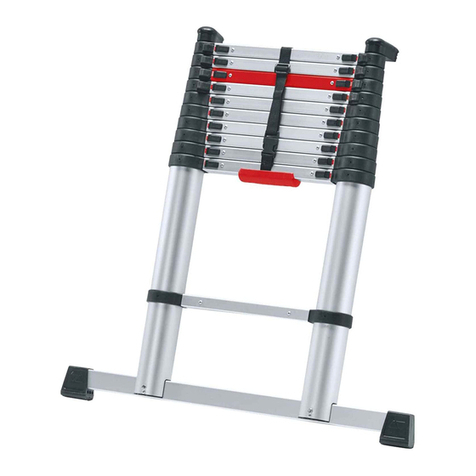
Powerfix Profi
Powerfix Profi PBT-TL012 Assembly, operating and safety instructions
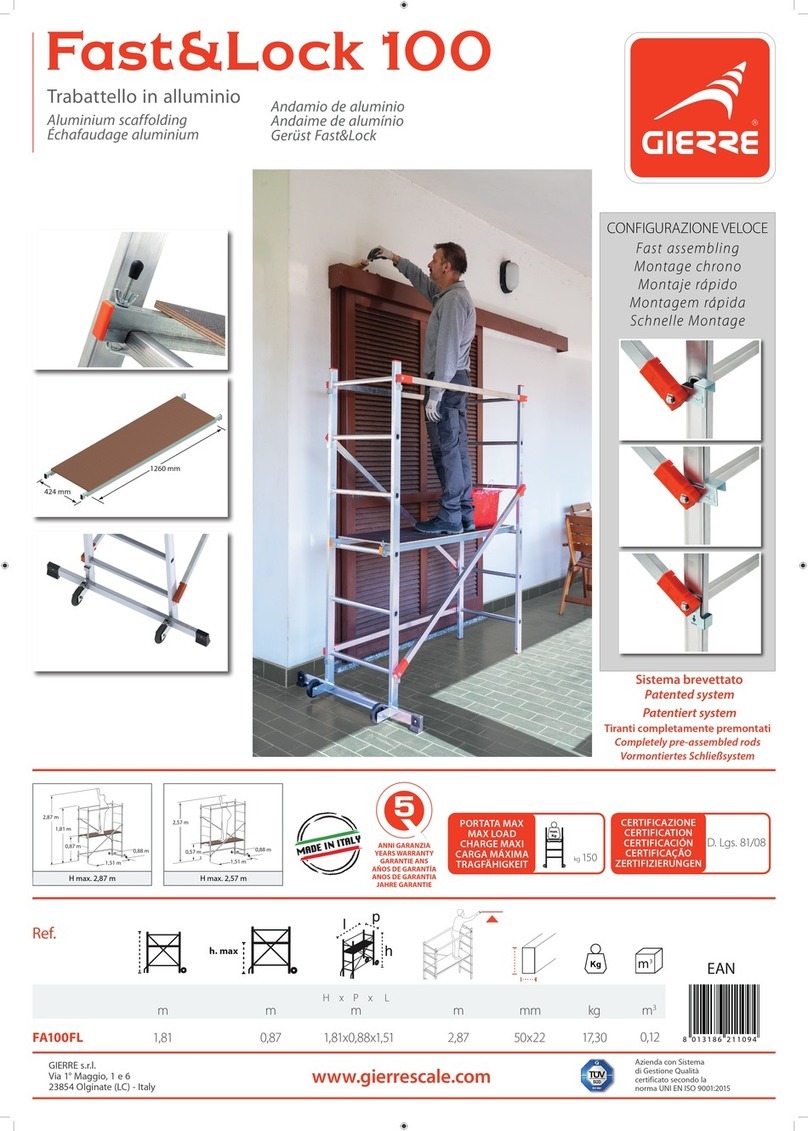
GIERRE
GIERRE Fast&Lock 100 quick start guide
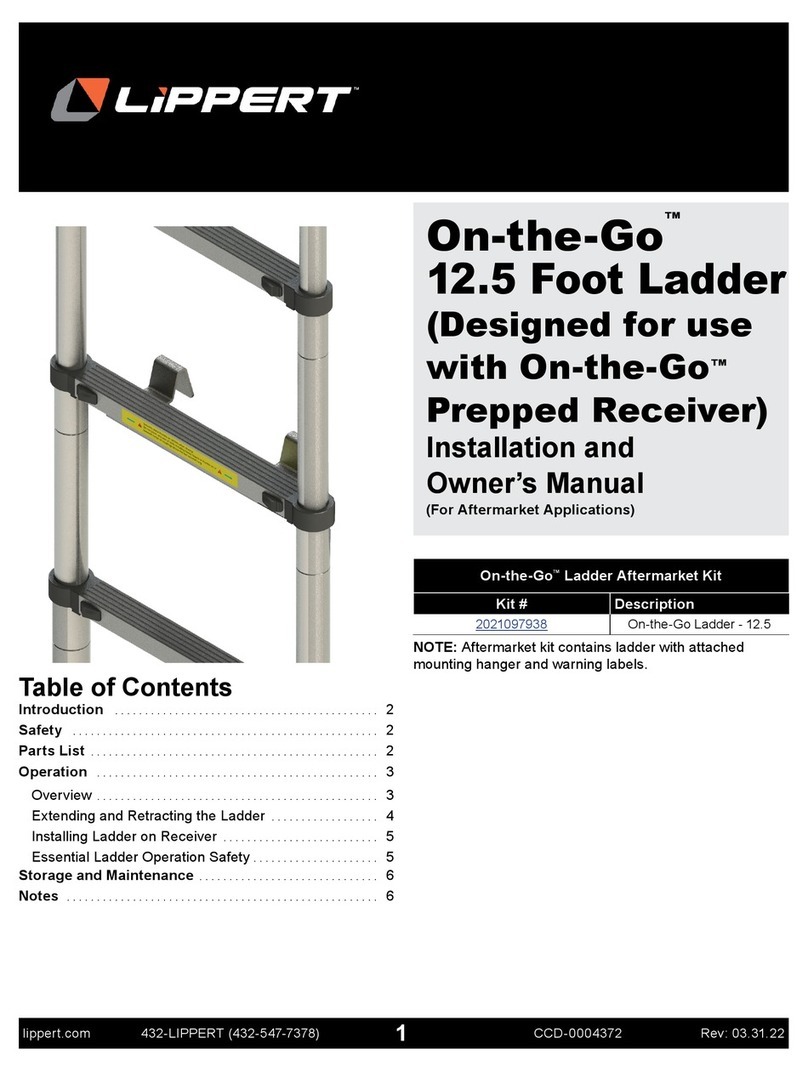
Lippert
Lippert On-the-Go 2021097938 Installation and owner's manual

OYPLA DIY
OYPLA DIY 3397 user manual
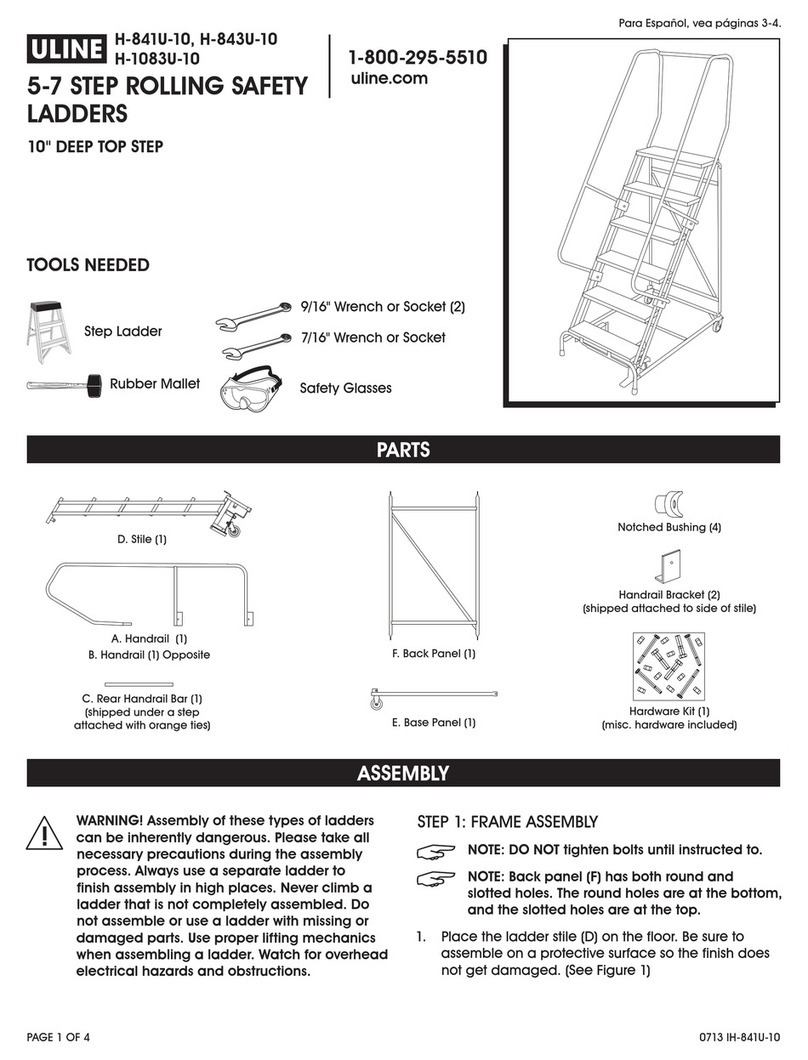
U-Line
U-Line H-841U-10 manual
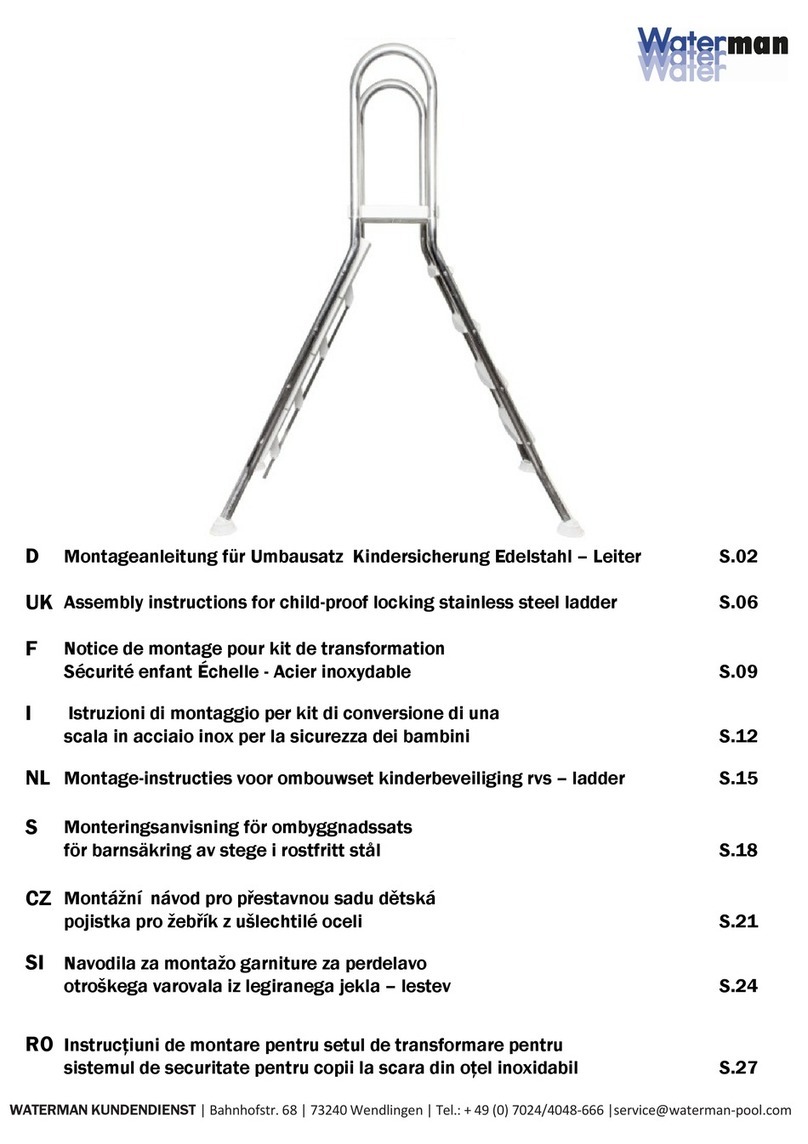
Waterman
Waterman 502020009 Assembly instructions


